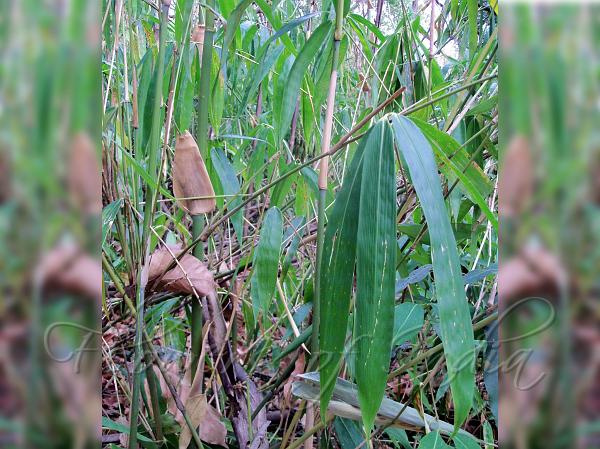|
| Muli Bamboo |
|

|

| File size | 644134 |
| Original date | 5/13/11 6:56 AM |
| Resolution | 2048 x 1536 |
| Flash | Flash did not fire, auto |
| Focal length | 6.3mm |
| Exposure time | 1/30s |
| Aperture | 3.0 |
| Focus Distance | |
| Metering Mode | Multi-segment |
| Camera make | EASTMAN KODAK COMPANY |
| Camera model | KODAK EASYSHARE C190 DIGITAL CAMERA |
| Sensor type | OneChipColorArea |
|
|
|
|
Photo: |
Botanical name: Melocanna baccifera Family: Poaceae (Grass family)
Synonyms: Bambusa baccifera, Melocanna baccifera, Melocanna bambusoides
Synonyms: Bambusa baccifera, Melocanna baccifera, Melocanna bambusoides
Muli Bamboo is a bamboo found in abundance in NE India. The flowering of
Muli bamboo is an event of great significance. Large tracts of land are
affected, as bamboo forests burst into bloom and then die. Significant
increases in rodent populations have been reported in the past, in
response to the increase in food supply as a result of seed setting. It
is an evergreen bamboo, with clump diffuse. Stems (stems) are 10-20 m
tall, 3-7 cm diameter, green when young, straw coloured when old, longest
internodes being 20-25 cm long. Stem-sheaths are 10-15 cm long, yellowish
green when young and yellowish brown on maturity, brittle, striate,
truncate or concave at the tip, hairless or sparsely with whitish
appressed hairs on the back. Young are shoots smooth, light purple or
purplish green, ligule with long hairs, soon falloing off, blades linear,
green. Leaves are 15-30 cm long, 2.5-5 cm broad, oblong lanceolate, tip
long-pointed. Leaf sheath is thick, ligulate. Ears very small with silvery
bristles. Inflorescence is a large compound panicle of one-sided drooping,
spicate branches, bearing clusters of 3-4 spikelets in the axils of short,
blunt, glabrous bracts, empty glumes 2-4. This fruit is very large
caryopsis, fleshy, pear-shaped, the stalk is inserted at the thick end and
the apex terminates in a curved beak. Muli Bamboo can be recognised easily
by diffused clump habit, having stem-sheath straight for about two-third
of the way up, then once or twice transversely waved with subulate
flagelliform blade.
| Identification credit: Amit Kumar | Photographed in Forest Research Institute, Dehradun. |
• Is this flower misidentified? If yes,